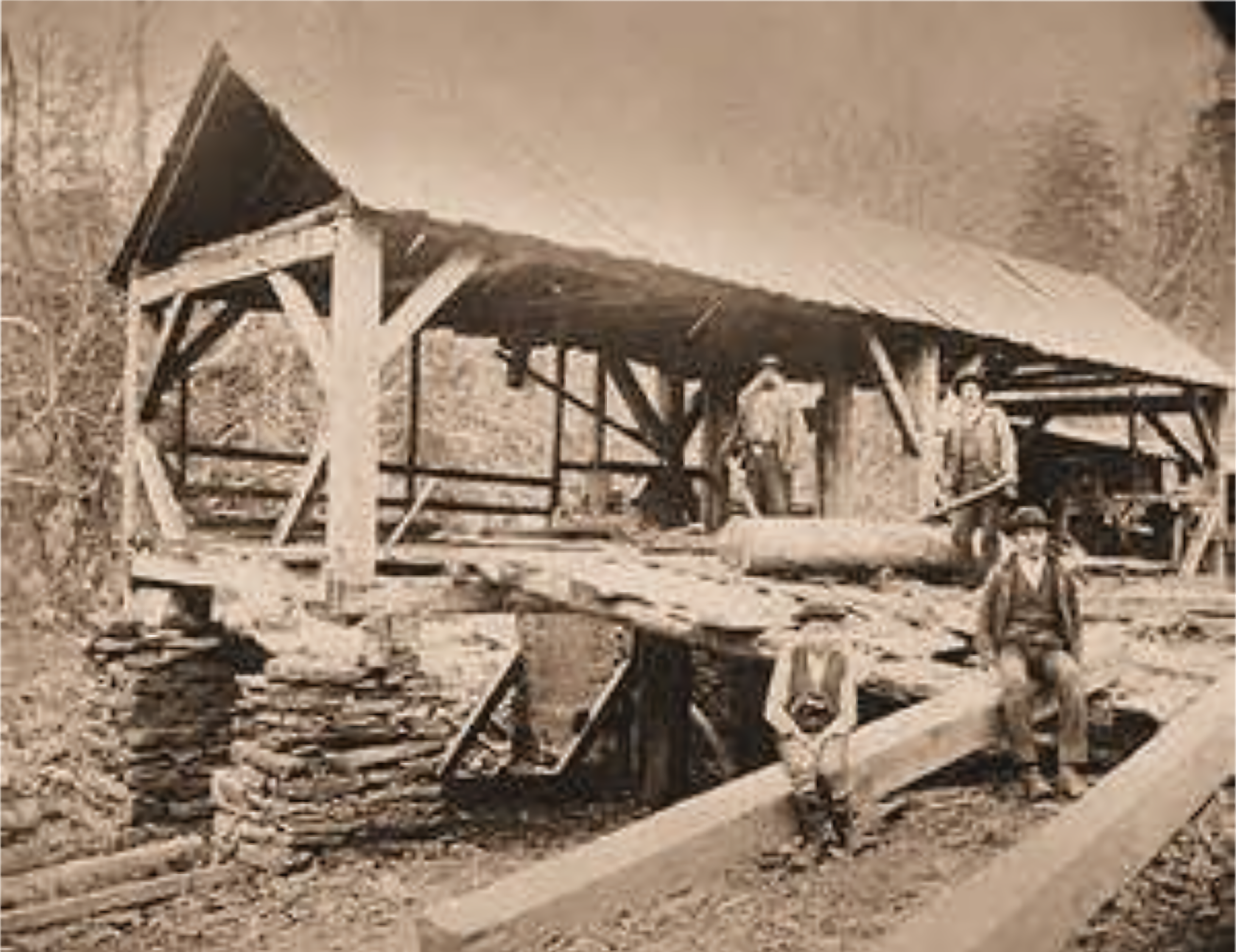Video: The Mills of Baraboo
Building Communities Quiz
Students take this quiz individually if they are accessing the quiz from the student page on their own computer. Students must report their scores.
Discovering History: Building Communities
Lyons Sawmill
Instructional Strategies - Building Communities
In this module students learn about the early growth of Baraboo, fostered by the building of dams and mills in and along the Baraboo River. Students deepen their map reading skills by learning about the Baraboo River oxbow, location of millraces, and the overlay of a historical map on a satellite image. Importantly, students gain an understanding of the importance of harnessing water power from the dams to power mills of various types, including saw mills, grist mills, and the Island Woolen Mills.
Ask students to consider the importance of the building of dams and mills to the growth of Wisconsin communities, including Baraboo. Students are able to take a virtual tour of the Beckman Mill, a restored and working grist mill near Beloit, Wisconsin.
Review where the dams were located, the manufacturing that grew with the dams, and the building of homes. Have them speculate on the growth of population and why people settled near the dams. Review the maps and primary source document by asking students to identify what they see and to make connections to the mid-nineteenth century industry.
Discuss the dangers, technology needed, and technology gained though building dams and mills. What skills did the builders need to have? What skills did the mill workers need to have? Ask students to speculate on the types of technology that developed because of the dams and mills. Discuss the difference pumped water and electricity made to the lives of the people living in Baraboo.
Wisconsin Social Studies Standards Alignment
Learning Priority: (Inq3.c) Elaborate how evidence supports a claim
3-5: Assess how evidence supports a claim.
Learning Priority: (BH4.a) Progression of technology
3-5: Classify technologies based on intended use, access, and design, and how they might change people’s lives (for better or worse).
Learning Priority: (Econ1.a) Choices and decision making
3-5: Use economic reasoning to compare and contrast the costs and benefits of a decision. Categorize different limited resources.
Learning Priority: (Econ1.b) Incentives
3-5: Infer potential incentives in a real-world situation.
Learning Priority: (Econ2.a) Consumers, producers, and markets
3-5: Compare two product markets found in the local community. Differentiate between goods and services.
Learning Priority: (Econ2.b) Firm/business behavior and costs of production
3-5: Compare the skills and knowledge required to produce certain goods and services. Provide an example of the factors of production (i.e., land, labor, capital, entrepreneurship) for a given product.
Learning Priority: (Econ4.a) Economic systems and allocation of resources
3-5: Trace the chain of supply for a needed product (e.g., food, shelter).
Learning Priority: (Geog1.b) Spatial thinking (map interpretation)
3-5: Identify purposes of and differences among maps, globes, aerial photographs, charts, and satellite images.
Learning Priority: (Geog5.b) Interdependence
3-5: Examine how human actions modify the physical environment when using natural resources (renewable and nonrenewable).
Learning Priority: (Hist1.a) Cause
3-5: Use evidence to draw conclusions about probable causes of historical events, issues, and problems.
Learning Priority: (Hist1.b) Effect
3-5: Use evidence to draw conclusions about probable effects of historical events, issues, and problems.
Learning Priority: (Hist2.b) Patterns change over a period of time
3-5: Describe patterns of change over time in the community, state, and the United States.
Learning Priority: (Hist4.c) Purpose
3-5: Describe the intended purpose of a specific primary or secondary source.


